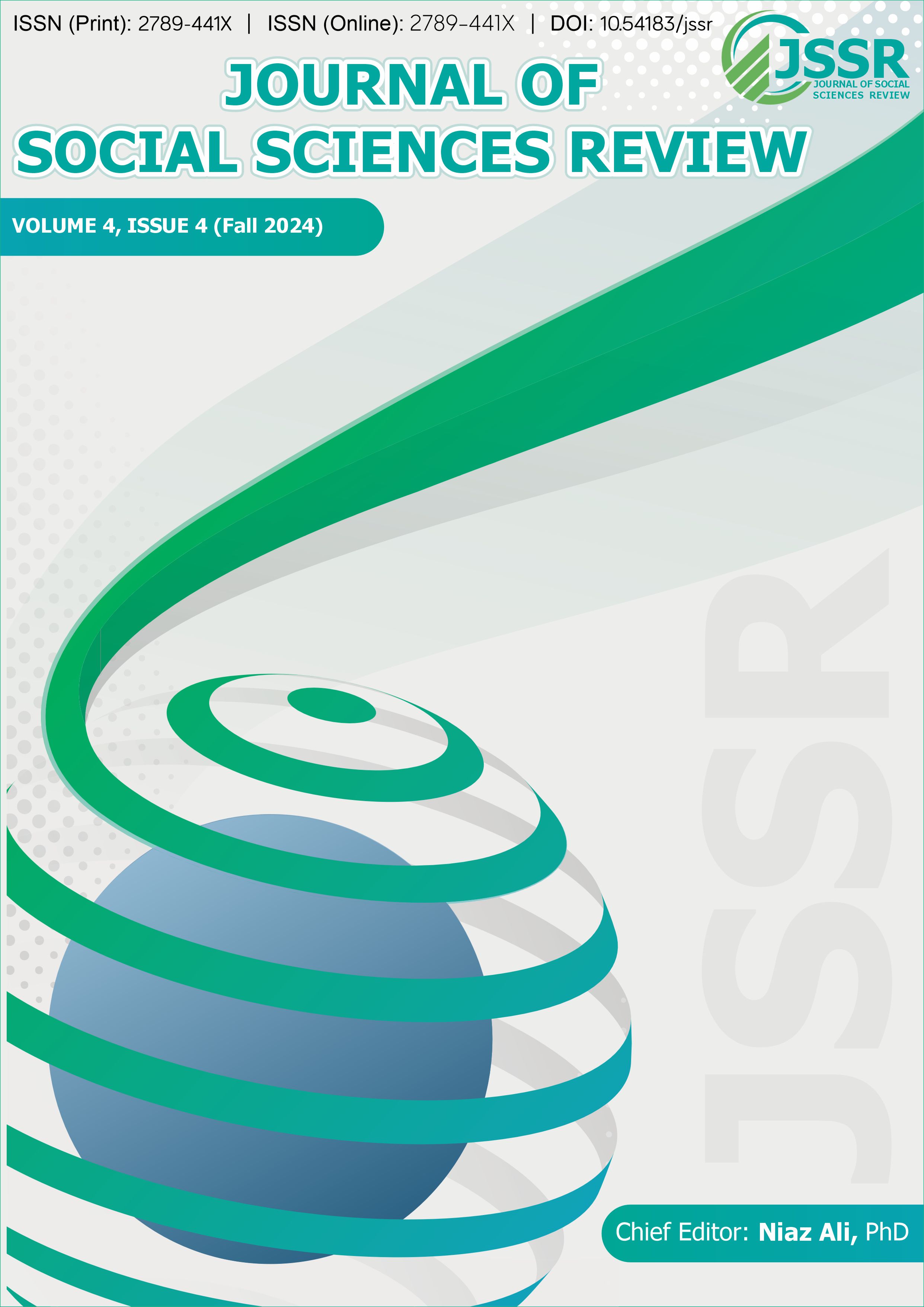Impact of Technology on Language Learning: A study of Translation Apps and their Usage at Undergraduate Level in University Education
DOI:
https://doi.org/10.54183/jssr.v4i4.432Keywords:
Translation Apps, Translation Errors, Translator Training, Language Improvement, Speaking and Writing Skills, Translation Competence, Translation Quality, LanguageAbstract
Translation apps have a helpful role in language learning, using the technology to present, re-enforce and assess material. These apps are tools to enable language acquisition across different contexts and have become indispensable in university education with the speed of technological advancement. Urlaub and Dessein (2022) indicated that machine and human translation systems are becoming increasingly prevalent in language education. Translation practices cannot omit these tools; we have computer-aided translation technologies and online dictionaries. The impact of translation apps on undergraduate translation students' achievement is investigated; samples were 100 respondents. Students understand the benefits of using translation apps, like improved language skills. Plus, it's much easier to learn than traditional ways, but obstacles prevent the most effective use of these translation apps. Key barriers are the cost of internet access, lack of proper training, and occasional confusion when using the apps. Despite these hurdles, most respondents said they were optimistic and had learned to read from translation apps, describing their utility for language learning. The findings imply that translation apps must be integrated into undergraduate education to facilitate language acquisition and translation skills. The further the potential of these technologies is maximized in academic settings, the greater the addressing of challenges such as those connected to internet costs and training.
References
Alotaibi, H., & Salamah, D. (2023). The impact of translation apps on translation students’ performance. Education and Information Technologies, 28(8), 10709–10729. https://doi.org/10.1007/s10639-023-11578-y
Bayne, S. (2014). What's the matter with ‘technology-enhanced learning’? Learning, Media and Technology, 40(1), 5–20. https://doi.org/10.1080/17439884.2014.915851
Celce-Murcia, M. (2001). Teaching English as a second or foreign language (3rd ed.). Boston: Heinle & Heinle.
Chapelle, C. A. (2005). Computer-assisted language learning. In Handbook of Research in second language teaching and Learning (pp. 743-755). Routledge.
Gass, S., &Selinker, L. (2008). Second language acquisition: An introductory course (3rd ed.). Routledge. https://doi.org/10.4324/9781410604651
Gouadec, D. (2007). Translation as a profession. Amsterdam: John Benjamins Publishing Company.
Hubbard, P. (2023). Emerging technologies and language learning: mining the past to transform the future. Journal of China Computer-Assisted Language Learning, 3(2), 239–257. https://doi.org/10.1515/jccall-2023-0003
Kučiš, V., & Seljan, S. (2014). The role of online translation tools in language education. Babel. Revue internationale de la traduction / International Journal of Translation, 60(3), 303-324. https://doi.org/10.1075/babel.60.3.03kuc
Lake, V. E., & Beisly, A. H. (2019). Translation apps: Increasing communication with dual language learners. Early Childhood Education Journal, 47(4), 489–496. https://doi.org/10.1007/s10643-019-00935-7
Lam, W. S. E. (2014). L2 Literacy and the Design of the Self: A Case Study of a Teenager Writing on the Internet. In Handbook of research on new literacies (pp. 1189-1212). Routledge.
Lomicka, L., & Lord, G. (Eds.). (2009). The next generation: Social networking and online collaboration in foreign language learning. CALICO, Texas State University.
Mali, Y. C. G., & Salsbury, T. L. (2021). Technology integration in an Indonesian EFL writing classroom. TEFLIN Journal - A Publication on the Teaching and Learning of English, 32(2), 243. https://doi.org/10.15639/http:/teflinjournal.v32i2/243-266
Munday, J. (2016). Introducing translation studies: Theories and applications (4th ed.). New York: Routledge.
Ogundokun, R. O., Awotunde, J. B., Misra, S., Segun-Owolabi, T., Adeniyi, E. A., & Jaglan, V. (2021). An android based language translator application. Journal of Physics. Conference Series, 1767(1), 012032. https://doi.org/10.1088/1742-6596/1767/1/012032
Russell, V. (2020). Language anxiety and the online learner. Foreign Language Annals, 53(2), 338–352. https://doi.org/10.1111/flan.12461
Shadiev, R., & Yang, M. (2020). Review of studies on technology-enhanced language learning and teaching. Sustainability, 12(2), 524. https://doi.org/10.3390/su12020524
Urlaub, P., & Dessein, E. (2022). Machine translation and foreign language education. Frontiers in Artificial Intelligence, 5, 936111. https://doi.org/10.3389/frai.2022.936111
Downloads
Published
Issue
Section
License
Copyright (c) 2024 Copyright in the Journal of Social Sciences Review is retained by the author(s). Authors also grant any third party the right to use the article freely as long as its integrity is maintained and its original authors, citation details and publisher are identified.

This work is licensed under a Creative Commons Attribution-NonCommercial 4.0 International License.
SSR's Editorial Board shares the vision of providing free access to information, education, and science for everyone, thus promoting its content through an OPEN ACCESS POLICY, fulfilling the DOAJ definition of open access. The JSSR adheres to an Open Access and Copyright Licensing Policy based on the belief that making research freely accessible to the public promotes greater global knowledge sharing.
The JSSR uses the Creative Commons Attribution-NonCommercial 4.0 International License. The authors who apply and publish in JSSR consent to abide by the copyright policy set out in the Creative Commons 4.0 license (Attribution-NonCommercial 4.0 International license).
- Copyright in the Journal of Social Sciences Review is retained by the author(s).
- Authors also grant any third party the right to use the article freely as long as its integrity is maintained and its original authors, citation details and publisher are identified.
While "By 'open access' to this literature, we mean its free availability on the public internet, permitting any users to read, download, copy, distribute, print, search, or link to the full texts of these articles, crawl them for indexing, pass them as data to software, or use them for any other lawful purpose, without financial, legal, or technical barriers other than those inseparable from gaining access to the internet itself."



